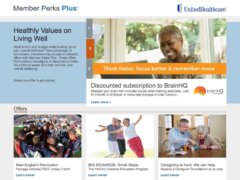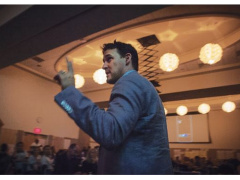I had two unrelated experiences in the last 2 weeks around return on investment in healthcare. One was a question from a social media follower on how I approach ROI, and another was reading a BLOG entitled “ROI in Health IT is More Than Just the Pricetag.” I disagreed with the BLOG’s premise as I feel that Healthcare IT projects are some of the most costly and poorly executed across all industries. I decided to write up a short post on this subject.
Can healthcare have a return on investment?
The cost of healthcare should be a primary concern for all of us. Healthcare Reform, while providing access to more consumers, does not address the underlying problems of escalating costs. And costs are most certainly rising. In the 2008 Robert Wood Johnson Foundation publication entitled High and Rising Health Care Costs: Demystifying U.S. Health Care Spending, you can clearly see that unless the model changes, and cost controls are implemented, the healthcare system as we know it today will implode.

I responded to the BLOG author that cost matters more than anything else. If we do not reign in cost, we will bankrupt the system given its current trajectory. In my experience, many – if not most healthcare models do not produce a viable patient health outcome compared to their cost.
Likewise, we are often misguided to make statements like technology will solve our problems. Healthcare companies produce loads of unused and unusable technology. It is now the time to invest in creating an experience that produces known outcomes – and whatever technology is required to create those experiences, and then go forward. But to lead with the constant battle cry of “technology will save” us, whatever the cost might be, takes the care out of healthcare.
Healthcare Does Have an ROI Equation
I like to think ROI is quite definable for healthcare. ROI is the production of value as compared to its economic cost. Value is very definable in healthcare. “Value” is the patient health outcome achieved per healthcare dollar spent.
So more value is achieved when you get:
- Improved patient engagement,
- Improved patient experience and patient outcome, and
- Reduced aggregate cost of care.
How Do I Create ROI for Clients?
I have based my work in this area on Clayton Christensen (Jobs-to-be-done), Tim Brown (Customer Experience), Eric Reis (Minimum Viable Product), Alex Osterwalder (Business Model Innovation), Peter Senge (Co-creating Shared Vision), and Harvard Business Review (Decision Design).
I combine these premises with deep and varied healthcare experiences to deliver collaborative business modeling, decision driven organization design, and agile communication techniques to ensure that your great ideas have momentum, and meet the market ready to accelerate profitable growth for your company.
My operating premise related to creating ROI for clients is two-fold:
- Information about what markets, products and/or services NOT to pursue is valuable. And as such, the minimum cost in time and resources spent on obtaining that information is vital.
- Business Models cannot keep up with the rate of change brought on, and accelerated by consumer empowerment. As such companies must invest in R&D, innovation, or what ever you want to call it and in customer experience.
Within these guidelines, the search for new business models is in-and- of-itself valuable and often a good return on investment. Care must be take though, to lessen the cost and time commitment in finding and proving out new models – this is what I call The Drawing Room.
So I encourage and teach companies to validate ideas and advance them to the market in the fastest and most cost-efficient manner possible. I advocate for the “NO” in innovation – so many, perhaps most, ideas are appropriately killed or sidelined. Using the tools and techniques in “The Drawing Room,” I show you how to do it quickly and painlessly.
Once a good idea passes certain stage gates, it needs a real business plan to match its prototyped business model. Calculating the staging of expected return on investment in a collaborative fashion, and communicating it to all stakeholders is the second part of the equation. I have built many businesses and business lines for companies – so there is a lot of art and science I have discovered in getting everyone on the bus and then communicating pre-decided progress against goals in an effective way.
I hope this helps.
To your health,
The Team at imagine.GO




